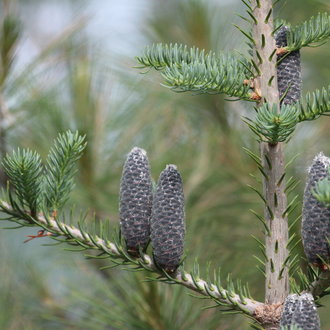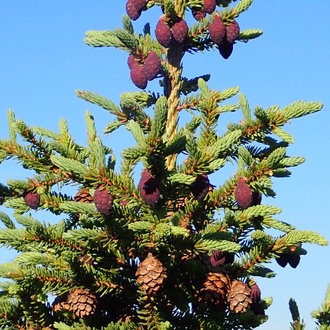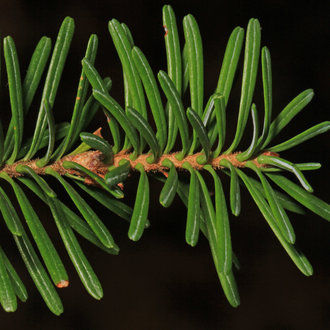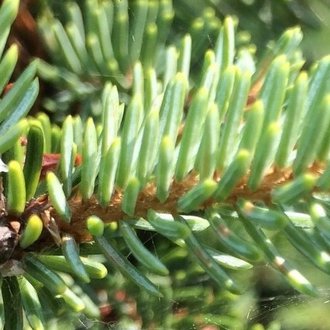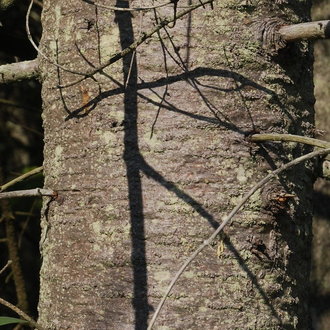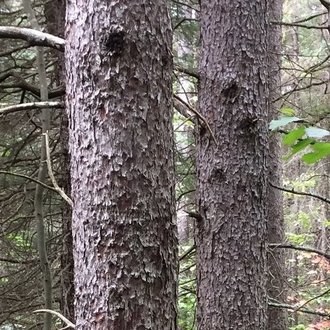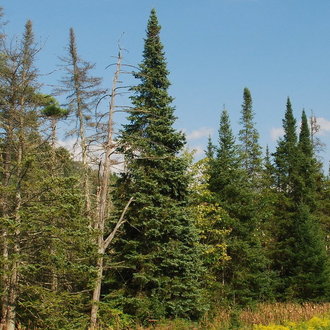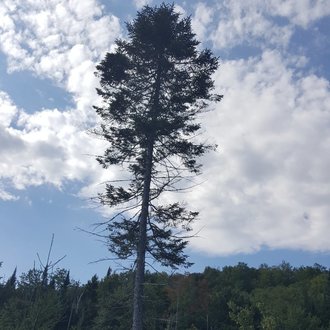Balsam Fir vs Black Spruce
Although balsam fir looks very different from black spruce when growing in shade, black spruce is frequently confused with balsam firs growing in open, sunny conditions; the species look most similar when they co-occur on rocky sites near the tree line. Both can have a narrow, conical shape, short, bluish needles, and hairy twigs, especially on new growth. They are easily distinguished by cones or close examination of needles. They also have differences in shape, as well as habitat and successional stage: balsam fir is absent from bogs and poorly-drained sites, where black spruce is common, and balsam fir occupies a later stage in forest succession in areas where both species co-occur.
Balsam Fir (Abies balsamea) | Black Spruce (Picea mariana) |
An evergreen conifer native to North America, and a late-successional species found in areas that have not been disturbed recently. The only fir found in the northeast. | A conifer with a northerly distribution, native to North America; found on acidic soils, often on poorly-drained sites, often with stunted growth. |
Large, upright cones. Cones disintegrate after one season. Photo © Rob Foster, CC BY 4.0. | Small, dangling cones. Some cones from previous years are retained on trees. Photo © Rob Foster, CC BY 4.0. |
Needles are flat, blunt-tipped, and are attached to the twig with a green suction-cup base. Photo © Judy Gallagher, CC BY 4.0. | Needles are diamond-shaped in cross-section, pointed, and attached to the twig by a short woody appendage. Photo © Derek, CC BY 4.0. |
Bark is smooth, except for horizontally-oriented lenticels and resin-filled blisters. Usually lighter in color. Photo © Doug Goldman, CC BY 4.0. | Bark of mature trees scaly, showing more vertically-oriented features. Usually darker in color. Photo © Derek, CC BY 4.0. |
Sharper conical shape especially noticeable at the top of mature trees; more likely to retain lower branches at maturity, reflecting greater shade-tolerance and occurrence in richer habitats. Photo © Doug Goldman, CC BY 4.0. | Slightly rounder-topped shape to mature trees; often loses lower branches at maturity, reflecting lower shade-tolerance as well as occurrence in harsher habitats. Photo © Charlie Hohn, CC BY 4.0. |
References & External Resources
These short lists show only links helpful for ID. For a complete list of references and resources also covering other aspects of ecology, visit the links section of the full article on each plant, which is the first entry here.



